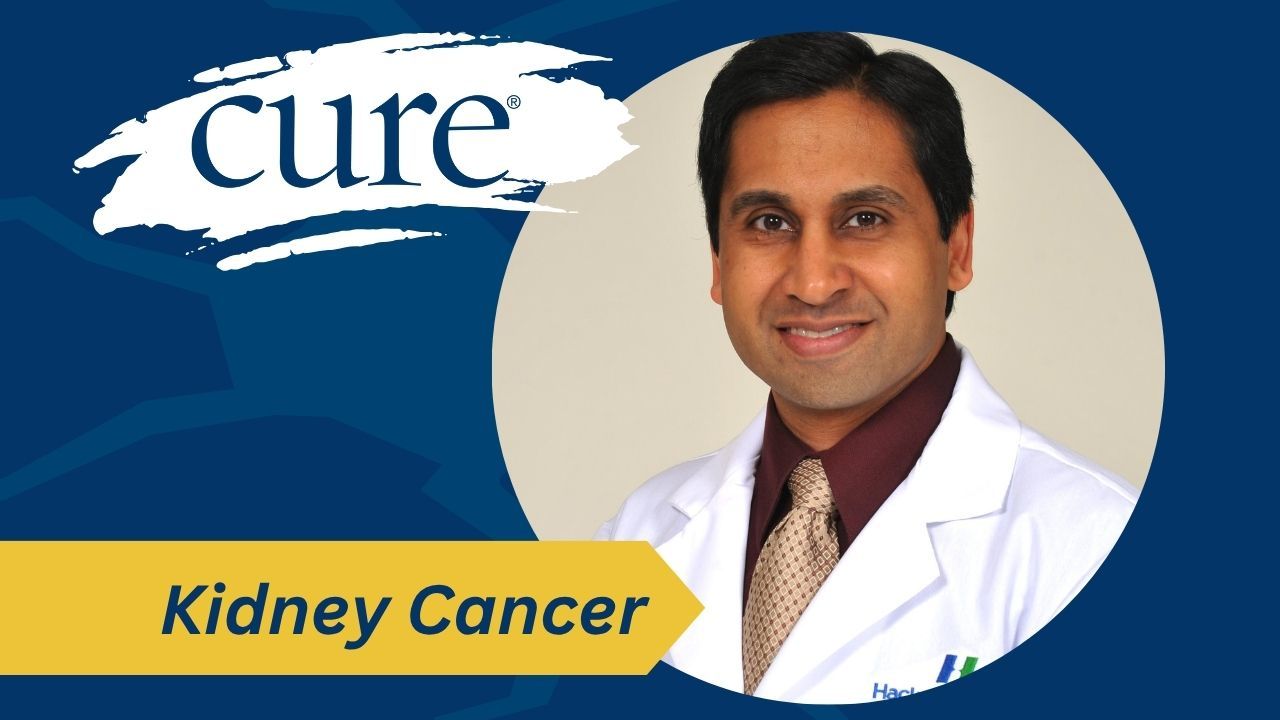In the second part of our conversation with Dr. Ravi Munver, associate chief of urology at John Theurer Cancer Center and chief of minimally invasive and robotic surgery at Hackensack University Medical Center,
Munver provides insight into how patients can maintain kidney function using minimally invasive techniques, the benefits of a multidisciplinary approach to care, and practical guidance for managing treatment and long-term follow-up.
CURE: What factors do you consider when deciding between a partial or radical nephrectomy for a patient?
Munver: The question of partial versus radical nephrectomy is a big one. When I began my fellowship about 25 years ago, we removed the vast majority of kidneys, even for small tumors the size of a pea or a marble. With the development of minimally invasive techniques such as laparoscopic surgery and more recently robotic surgery, we are now able to offer partial nephrectomy to the vast majority of our patients. In fact, more than 80% of the kidney cancer surgeries we perform at Hackensack University Medical Center are partial nephrectomies, allowing us to save the kidneys in the vast majority of patients.
The patients requiring radical nephrectomy are those with very large renal masses. Sometimes they have more than one kidney mass, or the kidney doesn't function very well with what may be a smaller tumor. In this case, saving the kidney will make no difference if the kidney does not function or if patients recur with tumors in that kidney, which may not be possible by cutting out the tumor and rebuilding the kidney.
Just yesterday I had a very fascinating case of a gentleman who was 71 years old. He had to have a kidney biopsy because he had a large mass that went deep into his kidney, and two other facilities in the area told him his kidney needed to be removed. He came to me because the pathology result showed kidney cancer and we painstakingly performed a very complex robotic partial nephrectomy yesterday and were able to remove the tumor and save his kidney and he went home this morning.
How does multidisciplinary care at your center improve patient outcomes and support overall treatment planning?
The first two people I met when I came to Hackensack University Medical Center over two decades ago were a medical oncologist and a radiation oncologist. I am a surgical oncologist and operate on patients to remove cancer. However, together with our medical oncologist and our radiation oncologist, we take a multidisciplinary approach to kidney cancer. In cases where kidney cancer has metastasized or advanced, these patients may still benefit from surgery but may also require targeted therapies, including immunotherapies. These types of therapies combined with surgery can provide patients with better outcomes than targeted therapies or immunotherapies or surgery alone.
Our multidisciplinary approach not only includes surgical oncologists such as the urologist, medical oncologists who perform immunotherapies, targeted therapies and chemotherapy, and radiation oncologists who perform radiation therapy, but we also work with our radiologists and pathologists to examine imaging studies and review pathology reports when we remove a tumor or a Perform tumor biopsy. In addition, we also work with our nephrologists, or medical kidney doctors, on patients who already have kidney disease or who may later develop kidney disease if they have other medical problems that could cause them to potentially need dialysis in the future.
What important advice would you give to patients newly diagnosed with kidney cancer about navigating treatment options and longer-term care?
It is important for patients recently diagnosed with kidney cancer to do several things.
First, they must understand the disease process. Kidney cancer is easy to treat and, in most cases, curable if the cancer is detected early.
Secondly, patients must visit a center of excellence. Hackensack University Medical Center is one such center where we are proud to offer not only the latest imaging technologies, percutaneous biopsies, i.e. through the skin, to biopsies of tumors, surgical therapies using robotics, immunotherapies, targeted therapies and radiation therapies. We are a leading kidney cancer center and it is important that patients with kidney cancer go to centers of excellence so that they receive the best specialist treatment.
Third, they must understand that even after therapy, be it surgery, radiation, targeted therapy or immunotherapy, the course will be protracted. When I say a long course, I mean that patients, even if they are cured in the first or second year, maintain the relationship with their surgeon, their medical oncologist, or their radiation oncologist so that they remain cancer-free for the rest of their lives. Therefore, annual visits are important. Long-term follow-up care is extremely important so that patients can remain completely healthy and disease-free.
The transcript has been edited for clarity and conciseness.
reference
- Understanding Recent Advances in Kidney Cancer Treatment, by Ryan Scott. CURE; September 22, 2025. https://www.curetoday.com/view/understanding-recent-treatment-advancements-in-kidney-cancer-care
For more cancer updates, research and education, visit
